In this Meeting Note, Piyush, Preeti and Shruti share the recent learnings from their participation in the short course on the art of agro-videography.
CONTEXT
With the world moving fast forward new technologies are being introduced to meet the growing demand for farm automation, digitalization and sustainability in agriculture. Agro-videography bridges the gap arising from disparity between farmers and scientists. Agro-videography is a domain within the world of videography that captures agricultural practices and its methods through video content. It conveys much information, along with the techniques and procedures followed in agriculture, as well as the lives of farm folk by showcasing the struggle they go through in everyday life.
To equip undergraduate from the departments of agriculture, economics, and extension, the School of Agriculture in partnership with Human Resource Department Centre, Lovely Professional University, organised a 7-day course on agro-videography from 10 to 16 October 2023, for 60 participants. The participants in this particular course were agriculture undergraduate students. The learnings from the course are as described below.
COURSE CONTENT
The structured short course was comprised of theory and practicals. It started with the theoretical aspects on the importance and benefits of Agro- videography, the revolution it can bring about by showcasing farming techniques, documenting crop development and addressing agricultural challenges. Instruction was given through case studies of different organisations that are keenly involved in uplifting small-scale farmers through agro-videography. New technologies are bringing to life stories without which this kind of history would have been lost, but are now preserved and re-told through such novel methods.
Dr Sapna Jarial explained how to preserve legacy, create stories, find stories and the basic equipment required to make a mobile documentary. We learnt about the rule of thirds, use of lighting, and shots. Likewise, we got an understanding of copyright and the attributions of Creative Commons. In India, we can file for copyright at the Copyright Office. Original work on scripts, videos can be filed for copyrights. This requires creating an account on the site. One can apply for copyright online after following certain instructions step by step. First, an account has to be set up by filling up annexure XIV; and inserting a scanned (512 KB) signature. Next, filling statement of particulars exclusively for ‘LITERARY/ DRAMATIC, MUSICAL, ARTISTIC AND SOFTWARE’ works, and finally paying Rs 500 through the Payment Gateway. Material under copyright is protected for up to 60 years.
We also came across an online community – Flickr – that provides an image hosting and video hosting service; it is free to the general public but correct attribution is required. It allows users to upload digital photographs from their computers and share them online with either private groups or the world at large.
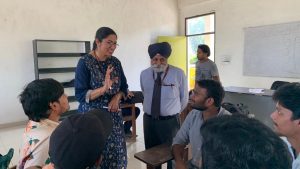 Interaction with experts
Interaction with experts
TECHNICAL ASPECTS OF VIDEOGRAPHY
Here the discussions focussed initially on the different types of camera and camera lenses.
Different Types of Cameras
- Pinhole camera – a simple camera without a lens but with a tiny aperture;
- Daguerreotype camera – creates a highly detailed image on a sheet of copper gilded with a thin coat of silver without the use of negative;
- Obscura camera – in this there is a darkened room with a small hole at one side through which an image is projected onto a wall.
Types of Camera Lens
- Wide-angle lens – It covers angle of view between 64 degrees to 84 degree which in return translates to a 35-24mm lens in 35mm film format.
- Telephonic lens – The lens has a relatively narrow field of view and therefore is used to look at faraway subjects.
- Fisheye lens – It is an ultra-wide-angle lens that produces strong visual distortion intended to create a wide panoramic or hemispherical image.
- Prime lens – It has fixed focal length due to which the lens does not zoom. This creates sharp images footage with stunning shallow depth of field.
Along with technical knowledge, Mr. Simranjit Singh also presented the history of videography that was comprised of Motion Pictures, Cinematography, VFX, etc.
Camera Shots
It refers to the different angles through which we capture footage to enhance the viewing experience. Different types of camera shots include:
- ECU (extreme close up) – we record the object/person close to his body, a limited part is shown, for example a face shot;
- CU (close up) – in this type of shot we take close picture but some extra details are also present. E.g.: above shoulder shot;
- MS (mid shot) – half body is taken into the frame;
- LMS (long mid shot) – here we also take in the half body but featuring distance is increased;
- LS (long shot) – full body is present in the frame;
- Extreme LS – here extra details are captured along with the body.
View Angle
Different views by which we can capture or observe the footage is called ‘view angle’. The different types of view angles are:
- Eye view – top view
- Aerial view – top view from wide angle
- Trunk shot – shots filmed inside an object like a car, truck, etc.
Type of Camera Movements
- Pan right/left – horizontal movement
- Tilt up/down – vertical movement
- Zoom in/out – magnification
- Dolly in/out – movement towards away or along with object
The interesting element of this course was experiential learning. The participants were divided into seven groups where we applied the theoretical knowledge gained during the first two-and-a-half days to practice through field exposure to capture actual content and develop documentaries. We developed these on bee culture, fruit plantation, horticulture, seasonal changes, water purification treatment for polyhouse, etc. We created a poetic documentary on capturing seasonal effects on the life of plants and farmers.
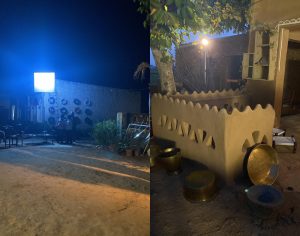 Blue colour for creating moonlight / Baby light in a scene
Blue colour for creating moonlight / Baby light in a scene
Documentary Development
We learnt how to write a script for a documentary comprising the 5Ws (What, Where, When, Why, Who) and 1H (How) questions. We also learnt to edit sounds accessing license free music and videos in videography. We applied various software in developing videos in the practical sessions.
Dr Sunaina Ahuja and Mr Sarabjit Singh Kwatra held an interactive session on videography in which they gave their insightful inputs on the topic. They also encouraged students to file for copyright which will help them in the long run.
Through these sessions we learnt how to create a documentary script, the importance of using clips in a landscape mode, the need for original and explanatory content, and how to create a 10-minute documentary film.
Mr Simranjit Singh delivered a live demonstration where he showed us how to use live location lighting, shooting set and camera angles. We also learnt how to edit and merge the clips with background music through the software.
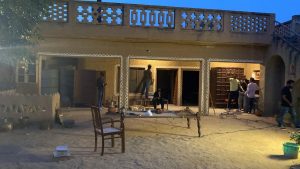 Setting up lighting for a video shoot
Setting up lighting for a video shoot
Dr Sapna Jarial introduced us to Adobe premium rush and CLIPCHAMP editing (audio-video) software. This helped us understand the software interface and how to create a project.
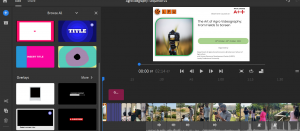 Demonstration on Adobe Premiere Rush
Demonstration on Adobe Premiere Rush
While preparing audio narration of our scripts, for timing we practiced in script timer. Also we were updated on websites with free video footage (pexels.com; pixabay.com/videos; videezy.com; videvo.net; and coverr.co ) and paid websites (videohive.net; shutterstock.com/video; stock.adobe.com; istockphoto.com/footage; pond5.com/stock-video-footage).
KEY LEARNINGS
During the 7-day course we learnt about:
- Benefit of using different angles while taking shots or in an interview and setting up of camera angle for an interview.
- Basically camera placement at a 30-degree angle is the best, and some important aspects of filming were also discussed.
- Mastering the art of interview shooting (by capturing subjects emotions, etc).
- Light and sound requirements.
- Basic editing terminology (e.g., cut, j cut, l cut for audio transition and so on).
- Mastering basic editing, transition.
- Colour grading with tips and tricks.
- The future of video editing is evolving as AI is the new character introduced in the market, so how it will transform or change video editing needs to be kept in mind.
- Music and voiceover – the right selection and correct sync of music and voiceover with right tone can enhance the overall work.
- Adobe Podcast that can be used to elevate the voice.
- Microphones of various types and their range capturing area, etc.
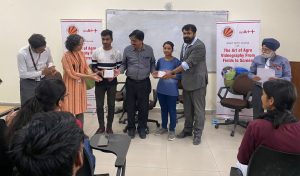 Dr Ramesh Kumar Sadawarti (Dean, Agriculture) giving prizes to students.
Dr Ramesh Kumar Sadawarti (Dean, Agriculture) giving prizes to students.
In addition, we also learnt the various types of video editing, including German Expressionism, Italian Neorealism, Poetic Realism, French New Wave, Cinema verité, New Hollywood, and their different styles of editing.
For more information:
- Mamet, D. (1992). On directing film. UK: Penguin.
- Lumet, Sidney. (2010). Making Movies. Vintage Books;
- Sonnenschein, David. (2001). Sound Design: The expressive power of music, voice, and sound effects in cinema. Amazon Kindle Edition.
CONCLUSION
The seven-day videography course has been an enriching and enlightening experience. Though we entered with minimal knowledge of videography, we emerged from the course with a solid foundation in this field. Now we are confident enough to operate cameras, compose visually engaging shots, manipulate lighting, record high-quality audio, and edit videos effectively. This course has equipped us with the skills and knowledge needed to pursue videography with enthusiasm and confidence.
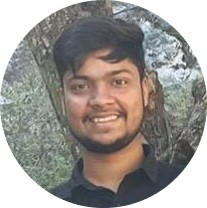 Mr Piyush Kumar, BSc. Hons. Agriculture III Year Student, School of Agriculture, Lovely Professional University. Email: piyushsharma3001@gmail.com
Mr Piyush Kumar, BSc. Hons. Agriculture III Year Student, School of Agriculture, Lovely Professional University. Email: piyushsharma3001@gmail.com
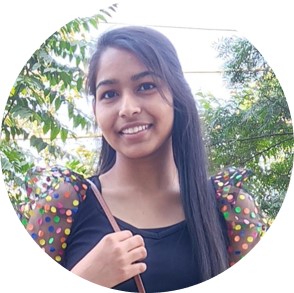 Ms Preeti Kumari, BSc. Hons. Agriculture III Year Student, School of Agriculture, Lovely Professional University. Email: preetikumarigems@gmail.com
Ms Preeti Kumari, BSc. Hons. Agriculture III Year Student, School of Agriculture, Lovely Professional University. Email: preetikumarigems@gmail.com
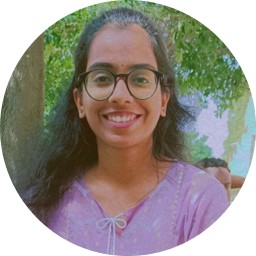 Ms Kumari Shruti Ray, BSc. Hons. Agriculture III Year Student, School of Agriculture, Lovely Professional University. Email: rayshruti881@gmail.com
Ms Kumari Shruti Ray, BSc. Hons. Agriculture III Year Student, School of Agriculture, Lovely Professional University. Email: rayshruti881@gmail.com



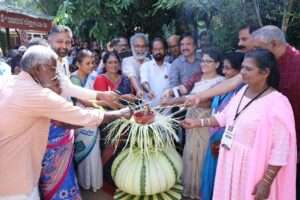

This type of skill oriented courses are very important since a lot of students are lacking such skills. Appreciably, at UG level, they got opportunity to attend such a traing. Thanks to Dr Sapna Jarial & her team for organising such programmes and motivating students to write too. AESA is one good knowledge Management platform for sharing information that is good for professional development for extensionists. Congratulations to budding scholars for writing this meeting note, who may opt for higher education in Agricultural Extension.